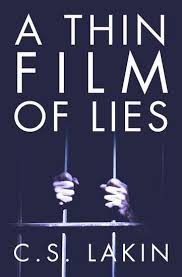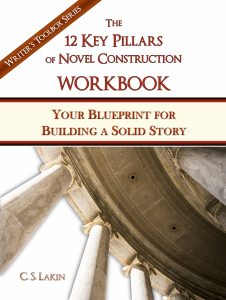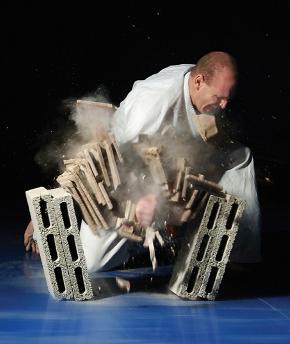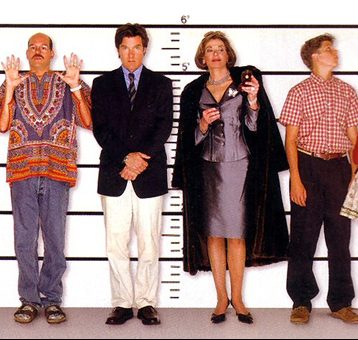What Writers May Not Know about the “Required” Three-Act Structure
I’m going to spend some weeks on tearing apart novel structure. I’ve hesitated over the years to get into this.
Why? Because there are tons of books and blog posts that cover story structure, and a lot of great ones too, so why should I add my two cents to the mix?
Because the longer I thought about it, the more I realized I have some unique approaches and twists to the standard three-act structure. Well, let’s just say I’m not always a team player on this court.
And, as well, I want to share with you a method of building your novel’s framework that I’m playing with. I call it the 10-20-30 Scene Builder. The purpose of using a “staged” or multilevel process is to help you flesh out that basic story idea you have. And one thing I’m excited about showing you is my special way of layering subplots.
But before we go there, we have to go here.
The Problem with Formulaic Structure
Some structure methods work well for some people. Others just can’t seem to fit their “square” story into a round hole. And there is no one perfect method. You may find that your novel just doesn’t break down well into three acts, or two major plot points and pinch points.
I personally don’t lay out my novels noting where these points go. I probably do it intuitively after writing sixteen novels over three decades, but when I step back and look at some of my novels, I see that I mostly let the storyline determine the number of acts and sections.
So what’s this three-act structure stuff all about, and is it a formula you should use? Or maybe start with and veer off as needed?
The three-act structure has been around a long time. Screenwriters rely heavily on it, but it’s not found in myths, legends, or other great stories of the past. Breaking stories up into acts is really an arbitrary choice.
Some research claims it originated with theater and television’s need to have breaks in the programming. Sponsors have to plug their products via commercials, right? Times may have changed and cable is all the rage, but commercial breaks are still a norm in our lives.
I remember all the hundreds of scripts my mother wrote for TV (daytime soaps, nighttime series, etc.). Every single script had a scene fade-out on specific pages (page 10, page 20, or the like) for that purpose. It wasn’t a choice; she had to structure her scripts that way to allow for the requisite commercials.
If you write a movie for television, it will likely have seven acts. Why? Because it has seven commercial breaks. And you will be asked to insert something intriguing at the end of each act to lure the audience back after the break. But that has nothing to do with story structure. It’s all for the gods of commercialism.
The Greeks had no act structure in their plays. The plays had one act. The Romans had five acts. It’s arbitrary. Acts appeared in plays because of the need to have intermissions. People can’t sit for three hours in a theater without taking a break or going to the restroom.
Sponsors (those companies that pay to promote their products during commercial breaks) want to sell something to target audiences. Networks need money and so are beholden to catering to sponsors. None of this has anything to do with story.
Breaking Up Your Story into Large Chunks
So, the better way to look at a story, when you are creating one, is not to succumb to an arbitrary dividing into acts but to examine just what story you are telling and what might be the best way to break that story apart into chunks.
Well, why do you even need to do that—break it up? Because it helps you see the primary sections of your story so that you can set things up, build to those key plot developments, and create resolutions to these developments.
It doesn’t have to be complicated. And you don’t have to break things up if you don’t want to. But I think you’ll find it helpful to look at your story in terms of large generalized sections each with a key purpose.
I love Michael Hauge’s six-act story structure, and I often use that. Why? Because to me it’s the most natural and intuitive. It basically works for any story, and it can be adjusted as needed. (You can learn more about his structure here on his website).
Let me share some brief examples of what I did in some of my novels. I’ll just look at one in this post.
Utilizing Section Breaks to Pound Home Motifs and Themes
 In A Thin Film of Lies, one of my psychological mysteries, I have Part One: Opening Shots. This is a prologue, and it has a brief visual of the car accident that kills Libby Denham. This sets up the story, which is about the investigation into her death. These section breaks are told in the voice of the nemesis, although you don’t learn who this character is until close to the end of the novel.
In A Thin Film of Lies, one of my psychological mysteries, I have Part One: Opening Shots. This is a prologue, and it has a brief visual of the car accident that kills Libby Denham. This sets up the story, which is about the investigation into her death. These section breaks are told in the voice of the nemesis, although you don’t learn who this character is until close to the end of the novel.
What inspired the content in these section breaks was my motif of photography. My nemesis is a photographer, albeit an amateur. But it’s the photos this character takes that cocoon the lies and the false accusations that land Mike Jepson in jail.
One-fifth in, you come to Part Two: Developing in the Dark. This section break has two paragraphs, using my camera/film motif to compare crime investigation with photography. The first section ends with Mike Jepson being interrogated about the hit-and-run, his life starting to unravel.
At about three-fifths into the novel, you come to Part Three: Exposing the Negative. Here I have just one paragraph about how powerful a camera is, and how a shot can destroy a life or even a nation. Part Two ends with Jepson arrested, and Part Three begins with him in jail, wondering how in the world this could have happened to him.
Part Four comes a bit past the four-fifths mark. I don’t place these sections in based on exact location or page number, which is what some writing instructors advocate. I place these where they best fit and for specific reasons. Part Four is called “Fixing the Final Image” and comprises only one brief paragraph that ties in with the title of the novel and pounds home the photography motif:
Just what is a piece of photographic paper, anyway? A flat piece of paper, coated with a minute amount of silver. In the blink of a shutter, a photographer can create reality or destroy lives. With that kind of power, what is this silver worth by the ounce? What would someone pay, and pay dearly, for that thin film of silver? Especially if it’s a thin film of lies.
I use this section break to set up the highly charged climax as Mike learns who his nemesis is and now has to find and stop her before someone is killed.
Then I have an Epilogue called “Parting Shots” four pages before the end of the book. This last scene matches the style of the prologue, which are both told in the nemesis’s voice (and readers now know who that character is—no spoilers here!).
I love bookending my novels so that the first and last scenes match in many ways (I’ll show you more examples of that in a later post). The prologue scene in Part One shows the car accident that killed Libby. The Epilogue scene shows another person hit and killed by another car, which is the impacting plot twist at the end of the story. Perfect bookends, and a way to end on a strong visual note.
The Only Basics You Really Need to Know
So, did I lay out that novel first into these six sections? Not at all. I first developed my story and followed the loose structure that included these basics (and which I lay out for you in The 12 Key Pillars of Novel Construction Workbook):
 Opening situation that showcases the protagonist in her ordinary world. In this case, my protagonist, Detective Fran Anders, has been called to the scene of the hit-and-run. Thus begins the investigation.
Opening situation that showcases the protagonist in her ordinary world. In this case, my protagonist, Detective Fran Anders, has been called to the scene of the hit-and-run. Thus begins the investigation.
Inciting Incident that pushes the protagonist in a new direction. Fran’s initial look at the scene leads her to Mike Jepson as primary suspect.
Goal set for the protagonist at around the 25% mark. Fran now has to determine and prove that Jepson is guilty of this crime, but it’s not as easy as it looks.
This is one of those standard novel structure benchmarks I wholly believe in. The protagonist must settle on a goal for the novel, and it’s about at this juncture that the goal is set.
It’s so important to understand that most novels (except epic stories that cover decades, such as a biography or family saga) are about a character going after one short-term goal.
The 25-50% section is the progress. This all follows Michael Hauge’s six-act structure. This is where the protagonist makes progress toward his goal. Many instructors focus on the midpoint, and I’ll talk about a bit that in a later post as well, but again, I don’t feel the great moment of revelation or realization for the character has to come right at the exact 50% mark.
Many screenplays follow this specifically, to the second, and movies do well sticking to this very expected formulaic structure. But it makes little sense to force novels into this framework so fanatically. Novels really are different beasts than films and can much easier succeed with creative or flexible structure, so don’t get your shirt all bunched up trying to force your story into that round hole if it’s got some sharp edges.
The 50-75% section presents bigger and bigger complications and obstacles as you approach the climax, which falls anywhere from the 75%-99% mark. Again, it depends on the story. Hauge uses the movie Thelma and Louise as an example of a climax coming right at the very end of the story. Really, how can you add any scenes with those characters after they’ve driven the car off the cliff to their deaths? All you get after that ponderous moment is a quiet roll of credits.
And, depending on your plot, the resolution to the whole shebang will fall at the end of the book, with (hopefully) a brief wrap-up.
Quick In, Quick Out
I go with the motto “Quick in, quick out,” and that’s what I teach my editing clients. The best novels end quickly after the big climax, which is where the protagonist either reached or failed to reach her goal. Since that’s the point of the story (to see if the goal is reached), it does a writer no good to wander off into a whole bunch of new plot developments at the end of the book. Or spend chapters telling what that character then does for the next five years of his life.
Seriously, I’ve critiqued novels that have another fifty pages of inconsequential story bits that have nothing to do with the premise of the novel or the protagonist’s goal. If you don’t know what I’m talking about, do a search on this blog for “protagonist’s goal” and read the many posts. Or buy all my writing craft books in The Writer’s Toolbox Series. I pound this point into the ground because it’s so crucial to understand.
So, you don’t have to break your story up into chunks and have actual sections. But it will help you in the plotting stages to do this in some fashion. Often breaks are best created when there is a jump ahead in time. It could be a week or a year. Again, this depends on your story.
But the breaks serve many purposes: they allow for a big moment before the end of a section, to set up tension and excitement for the next section to come, to hint at something coming, to give a breather for the reader to process what just happened (similar to a chapter ending, we tend to pause and prepare to move onward in the story).
Since I’ve given you a lot to think about here, we’ll dive into some more examples of section breaks next week.
Do you plot your story out in sections? Does this help give you ideas on how you can use breaks in your novel for good effect? Share some thoughts on this.












In the werewolf erotic horror novel I’m almost finished writing, I have many small sections each titled with the name of one of three narrators.